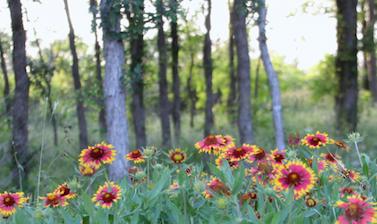On no subject are our ideas more warped and pitiable than on death. —John Muir
Where do we go after dying?
The ancient spiritual question has also become a practical, ecological one today—and autumn is a ripe time to ask.
Where should our remains go in a world increasingly crowded by human effects? Atmosphere, water, land: All are getting filled with the debris of our lives—waste, gases, chemicals going everywhere they don’t belong. And the human body?
Our earthly remains have become nothing less than underground time bombs for groundwater. Cadavers get pickled in gallons of formaldehyde fluid; we basically turn them into cancer-causing toxic waste.
Most are then tucked into wood-fiber caskets, likewise saturated in formaldehyde, methyl and xylene. That’s why casket manufacturers are among the top-listed hazardous waste producers tracked by the U.S. Environmental Protection Agency’s.
The entire toxic missile then gets encased in a metal or concrete vault—the whole contraption comprising a two-ton land mine to lodge in the ground. Eventual leakage is all but certain, turning the departed into poison for the very community the person might have worked hard during life to benefit.
Even above ground, commercial graveyards are generally dead zones vacant of habitat. Unlike the old rural cemetery full of birdsong and trees, most commercial graveyards are just chemically dependent lawn, sprouting no more signs of life than some plastic flowers.
Why is all of this toxic land use condoned, on a planet increasingly pinched for living habitat? That’s another mystery. The EPA, charged with regulating hazardous waste from cradle to grave, strangely overlooks all of the formaldehyde in graveyards themselves.
Cremation may seem a healthier option, yet it is an energy waste and carbon emitter. Each “roasting” takes 75 minutes of ultra-high temperatures, rapidly burning vast amounts of fuel, while shooting greenhouse gases, mercury and other contaminants into the air, land and water.
And it still leaves the “cremains”—including mercury and other metal toxins—which families often sprinkle in favorite nature spots, including water bodies.
A grieving buddy of mine disposed of her dad this way—mercury fillings and all—scattering his ashes over a beloved lake whose water quality he’d worked hard during life to protect. She later regretted the decision and was upset that she’d been told nothing about environmental impacts.
But the question remains: What should be done with our bodies once organs have been donated and the bulk remains?
Blessedly, our biosphere has been solving this puzzle—and quite cheerfully—throughout the eons.
Check out any autumn landscape where the dead are allowed to decompose: leaf litter, rotting logs, old feathers, bones, acorn shells, dry weeds in a field.
All of this decay turns seamlessly back into life—microbes, mosses, topsoil, wildflowers, grubs for birds, mushrooms for bears, amphibians, insects, the entire web of life.
Nature’s path is not cradle to grave. It’s what green designer William McDonough calls “cradle to cradle”—life into life. It’s how our biosphere itself evolved and got us here, and it’s meant to continue long after we’re gone.
That’s why it’s heartening that the green burial movement is resuscitating more gracious and grateful ways of returning ourselves to a world that gave us its life.
These lower-cost, low-impact, chemical-free burials skip the absurd formaldehyde infusions—preserving water quality, woodlands and meadows, and letting remains decompose into native plants, trees, humus and wildlife habitat.
Moreover, “A lot of natural cemeteries are using the profits they earn for land preservation,” says green burial enthusiast Robert Prout, director of Prout Funeral Home in Verona, N.J., “so the land will always be open, protected space.”
“We don’t look like … a cemetery,” says Ed Bixby, developer of Steelmantown Cemetery, also in New Jersey. “We look more like a park system.” His burial park not only offers three miles of trails, it adjoins the Belleplain State Forest, expanding a refuge for the living wildlife, hikers and kids.
Honey Creek Woodlands cemetery in Georgia, run by the Monastery of the Holy Spirit, is helping to protect the state’s 8,000-acre Arabia Mountain Heritage Area. And Ramsey Creek Preserve in South Carolina, an earlier pioneer in green burial practices, plans to protect one million acres of wild lands over the next decades.
Natural burial options like these are still relatively few. But soaring demand for them is opening the flow to conservation movements across the United States, reopening vital circuits from death back to life.
It’s an unexpectedly upbeat twist in our plot line of planetary decline—a happier ending for anyone alive to consider as the current autumn is returning life to life.
By Liza Field
Liza Field is a conservationist, tree-planter and ethics teacher in Southwest Virginia.



Write a Letter to the Editor on this Article
We encourage readers to offer their point of view on this article by submitting the following form. Editing is sometimes necessary and is done at the discretion of the editorial staff.